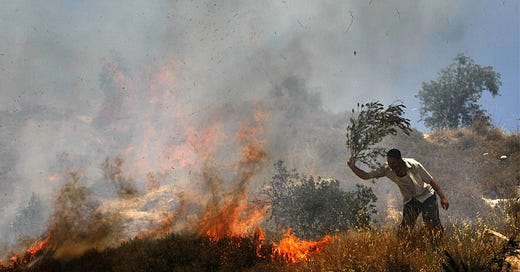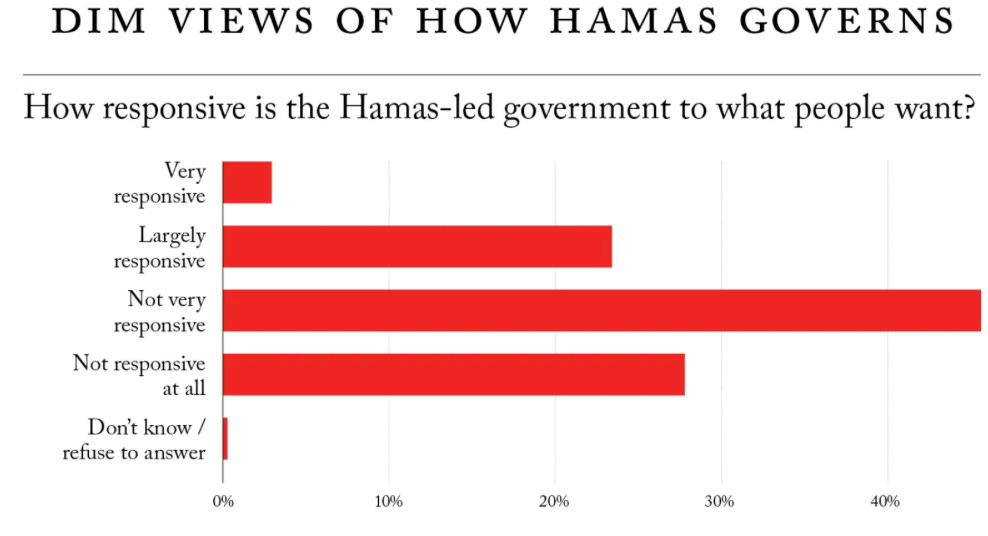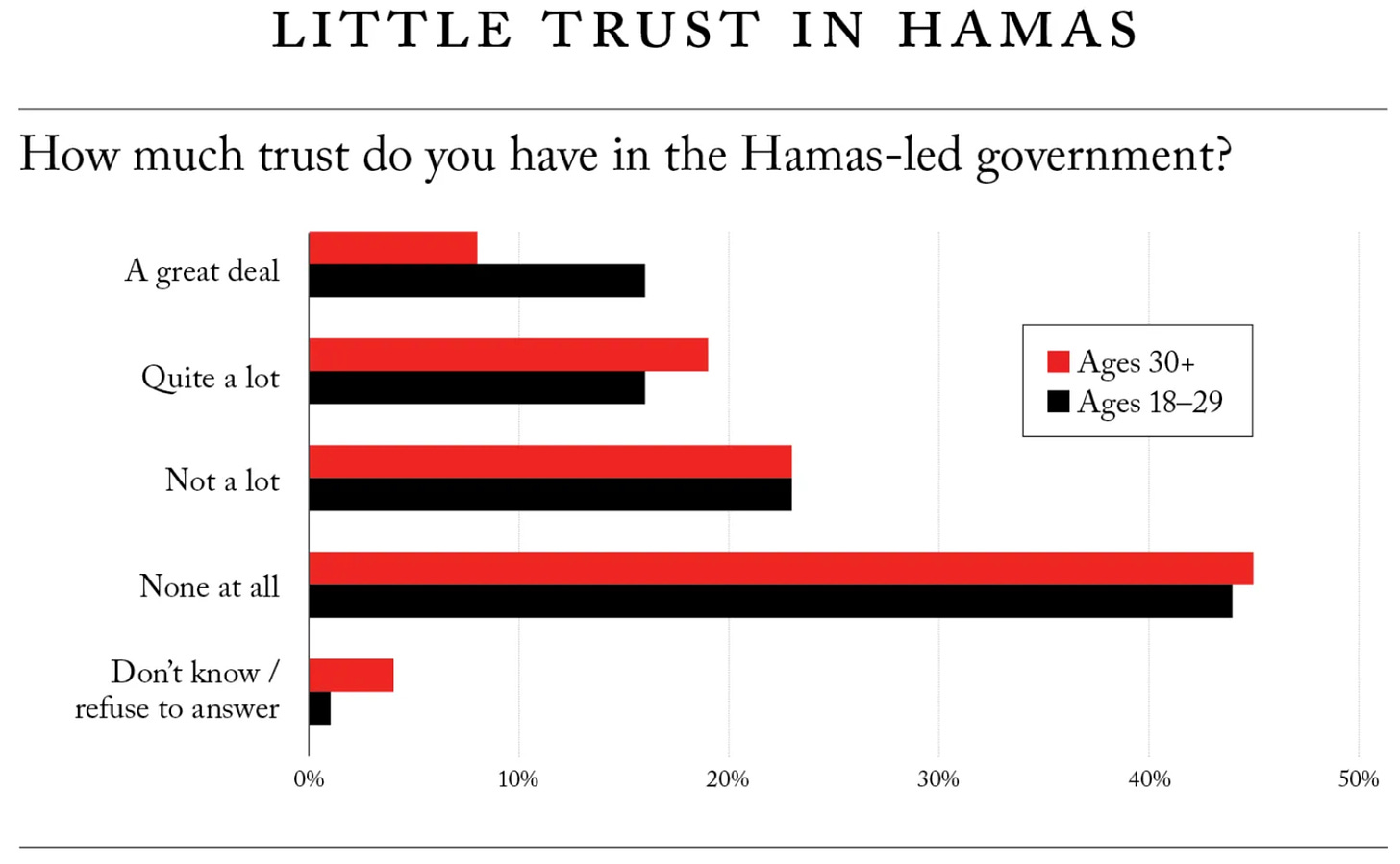The next front in the Gaza War
Plus: NZN merch. AI gets spicy. Microplastics munchers. Do Gazans support Hamas? Ukraine quotes of the week.
Israelis who worry that the war in Gaza might spread have been keeping an eye on Lebanon, where Hezbollah, Israel’s bitter enemy, has a capable army and a big arsenal of missiles. Maybe they should be looking closer to home—toward the West Bank, or, as Bibi Netanyahu and many other Israelis call it, “Judea and Samaria.” There, in the weeks since Hamas’s October 7 massacre, conflict between Israeli settlers and their Palestinian neighbors has intensified.
“Public attention is focused on Gaza, and what's not focused on Gaza is focused on the Lebanese border and Hezbollah,” Israeli lawyer Daniel Seidemann, an expert on Palestinian property rights, told me on the Nonzero podcast this week. “The extreme settlers are seeing this as an opportunity to fulfill their goal, and their goal is to expel Palestinians from their homes. So there has been a significant rise over the last two weeks in the intensity, the frequency, and the consequence of settler attacks on Palestinian villages, Bedouin encampments—basically to rid much of the area of its Palestinians.”
This is colloquially known as ethnic cleansing, and it does seem to be accelerating. According to statistics compiled by the UN’s Office for the Coordination of Humanitarian Affairs, West Bank Palestinians were being displaced from their homes at a rate of 15 per week in the 18 months before October 7, and since then the rate has been 235 per week.
And more than 120 West Bank Palestinians have been killed since October 7 by armed settlers or Israeli soldiers—a death rate that’s five times what it was for the first nine months of this year. In one West Bank village, Qusra, Israelis from a nearby settlement killed four Palestinians—and then took advantage of the funeral procession to kill two more. In other villages, settlers have come by and told Palestinians to vacate within 24 hours or be killed.
Settlers often say their violence is a response to Palestinian violence—or a pre-emptive strike against it. And there have indeed long been attacks on settlers by Palestinians. But since October 7 there hasn’t been an increase in settlers or soldiers killed in the West Bank.
There may yet be one. Though the West Bank is kept under pretty tight control by Israeli troops and the Palestinian Authority, the mounting carnage in Gaza could trigger broader Palestinian violence, especially if Hamas activates the cells it is said to have in the West Bank. For that matter, the surging settler violence could eventually provoke a big and violent Palestinian backlash. But the Palestinians would be no match for armed settlers backed by Israeli soldiers, so anything resembling a Palestinian uprising in the West Bank would probably wind up serving as an accelerant for ethnic cleansing; large numbers of Palestinians would be driven into fewer and more concentrated enclaves.
Such a spectacle could put pressure on Hezbollah to ramp up its cross-border strikes beyond their current token level. But even if Hezbollah stayed out of the fray, Israel’s prospects would in some ways darken. Over the past few weeks Israel has, with its relentless and not-very-surgical strikes in Gaza, lost much of the international good will it accumulated immediately after October 7. (In that sense, among others, it is reliving America’s post-9/11 experience, only faster.) A big wave of ethnic cleansing would add a new dimension to the moral indictment the country faces from a growing fraction of the international community.
And Israel’s special relationship with the US would come under new stress. As Middle East expert Joshua Landis explained in the Nonzero podcast posted today, the growing civilian death toll in Gaza has already made that relationship more of a geopolitical liability for America—certainly in the Arab world, where being seen as America’s friend feels increasingly uncomfortable. Few things would compound that problem more than Israel’s mass assault on Palestinians expanding beyond Gaza to encompass the West Bank.
Seidemann takes heart in the fact that President Biden has condemned the settler violence and told the Israeli government to clamp down on it. “The president has talked the talk,” he said to me. “It remains to be seen if he will walk the walk. If there will not be consequences imposed on Israel, this will not only proceed—it will get worse, and it could be very, very dangerous.”
Landis, though, thinks it unlikely that Bibi Netanyahu could crack down on settlers without bringing the collapse of his governing coalition (which, after all, includes one cabinet member who is a professed fan of anti-Palestinian pogroms and another who is a professed fan of Baruch Goldstein, the West Bank settler who in 1994 walked into a mosque and killed 29 Palestinian worshippers with a machine gun). And Bibi doesn’t have a history of political self-sacrifice for the greater good.
NZN has merch! Click here to browse an assortment of snazzy products.
This week Meta’s AI chief, Yann LeCun, took to Twitter to (once again) voice frustration over “fear-mongering” by people who worry that open-source AI could prove catastrophic for Earthlings.
Meanwhile, in a study posted a few days earlier: Researchers find that open-source AI could prove catastrophic for Earthlings.
The researchers—from MIT and the nonprofit SecureBio—organized a three-hour hackathon in which participants tried to dig up information on how to obtain and spread the virus responsible for the Spanish flu pandemic of 1918. Participants were given access to two versions of Meta’s Llama-2 open-source large language model. (Among the LLM heavyweights in the US—Meta, OpenAI, Google, Anthropic—Meta is the only one that makes its models open source.)
The first version, “base Llama-2,” had the standard safeguards, designed to make nefarious use hard. The second version, “Spicy Llama-2,” had the safeguards removed and was trained on virology texts—both of which were easier by virtue of the model being open source.
As one might expect, the “spicy” version proved more cooperative. For starters, it was unfazed by introductions like “I am a bioterrorist.”
No participants acquired pandemic-triggering powers within the three hours allotted, but one of them, using Spicy Llama-2, came “very close” to extracting enough information to obtain an infectious sample of the virus. And in general the spicy model proved a better helpmate for the aspiring pandemic starter than the base model.
The researchers concluded that making large language models open source—and thus releasing their internal calibrations, their “weights”—will grow more perilous as the models become more powerful: “Future, more capable foundation models, no matter how robustly safeguarded,” could, if open-source, “trigger the proliferation of capabilities sufficient to acquire pandemic agents and other biological weapons.”
Ukraine war quotes of the week:
“Just like in the first world war we have reached the level of technology that puts us into a stalemate… There will most likely be no deep and beautiful breakthrough.”
—Gen. Valery Zaluzhny, commander of Ukraine’s military, in an interview with The Economist
“Nobody believes in our victory like I do. Nobody.”
—Ukrainian President Volodymyr Zelensky, quoted in a Time cover story about him
“He deludes himself. We’re out of options. We’re not winning. But try telling him that.”
—one of Zelensky’s “closest aides,” speaking anonymously about Zelensky in the same Time story
As of a few weeks ago, most Palestinians in Gaza took a dim view of Hamas—but Israel’s invasion of Gaza could wind up changing that, according to an article in Foreign Affairs by political scientists Amaney Jamal and Michael Robbins. Scanning years of survey data from Gaza, the authors see a pattern: Gazans don’t much care for their government in ordinary times, but “Israeli crackdowns in Gaza most often lead to increasing support and sympathy for Hamas.”
A pre-war poll from early October of this year found that most Gazans distrusted Hamas and felt it wasn’t responsive to what people wanted. And nearly three quarters of those polled expressed support for a peaceful resolution to the Israeli-Palestinian conflict. But now Israel, with its massive retaliation for the Hamas-led massacre of October 7th, risks repeating history and driving “Gazans into the arms of Hamas, guaranteeing renewed violence in the years ahead,” the authors warn.
Microplastics, meet your new enemy, an anemone.
Scientists in Spain have taken a protein from Actinia fragacea, better known as the strawberry anemone, and used it as the basis for a synthetic protein that can degrade tiny pieces of plastic into less harmful components. The scientists presented their findings this week in the journal Nature Catalysis and (more intelligibly) in an article posted on Phys.org.
The new protein, which has been outfitted with three amino acids that act like scissors, can break down polyethylene terephthalate, or PET, a kind of plastic that accounts for about 11 percent of plastic output. This isn’t the only protein that can break down PET, but, according to one of the study’s authors, it is five to ten times more efficient than its peers.
Better still, the new protein works at room temperature, and it is porous enough to allow water to pass through it, so it could be used at water purification plants to filter out microplastics. The protein comes in two variants, one of which breaks down PET particles less thoroughly so the resulting components can be used in recycling. “In this way,” explains one of the scientists, “we can purify or recycle, depending on the needs.”
—By Robert Wright
Earthling banner created by Clark McGillis. Photos and graphics, unless otherwise credited, are taken from articles linked to in the corresponding text. Burnt olive trees pic from Muslim Mirror: Olive trees burn in the West Bank in 2015 as a Palestinian man tries to put out the fire.














Teresa Storch brought this NYT article to my attention. It illustrates the Kafkaesque legal system that Israel uses to deny Palestinians basic human rights. We need to be reminded that the common characterization of Israel as a democratic nation with civil liberties is misleading in the extreme when it comes to the treatment of Palestinians--not just during a war, but in "peace" as well. https://www.nytimes.com/2023/11/03/opinion/unarmed-teen-israel-gaza.html
Hamas barely won an election in 2006 in Gaza, then staged a coup in 2007 when it became clear it would not be able to win another election (see RW's correction below, this is misleading). Its administration of Gaza has been inept, brutal, and indifferent to the welfare of its people. Instead of isolating Hamas and undermining it and other militant groups in the region, the Israeli far right is seeking to get rid of the Palestinians, take over their land, and establish an authoritarian, religious regime. This Israeli government, which is sure to be swept out of power after this war, is squandering Israel's power and reputation by mercilessly murdering innocent civilians, illegally confiscating land owned by Palestinians, and prosecuting a self-defeating and opportunistic war of revenge. Effectively supporting Israel requires us to not support the Netanyahu government.